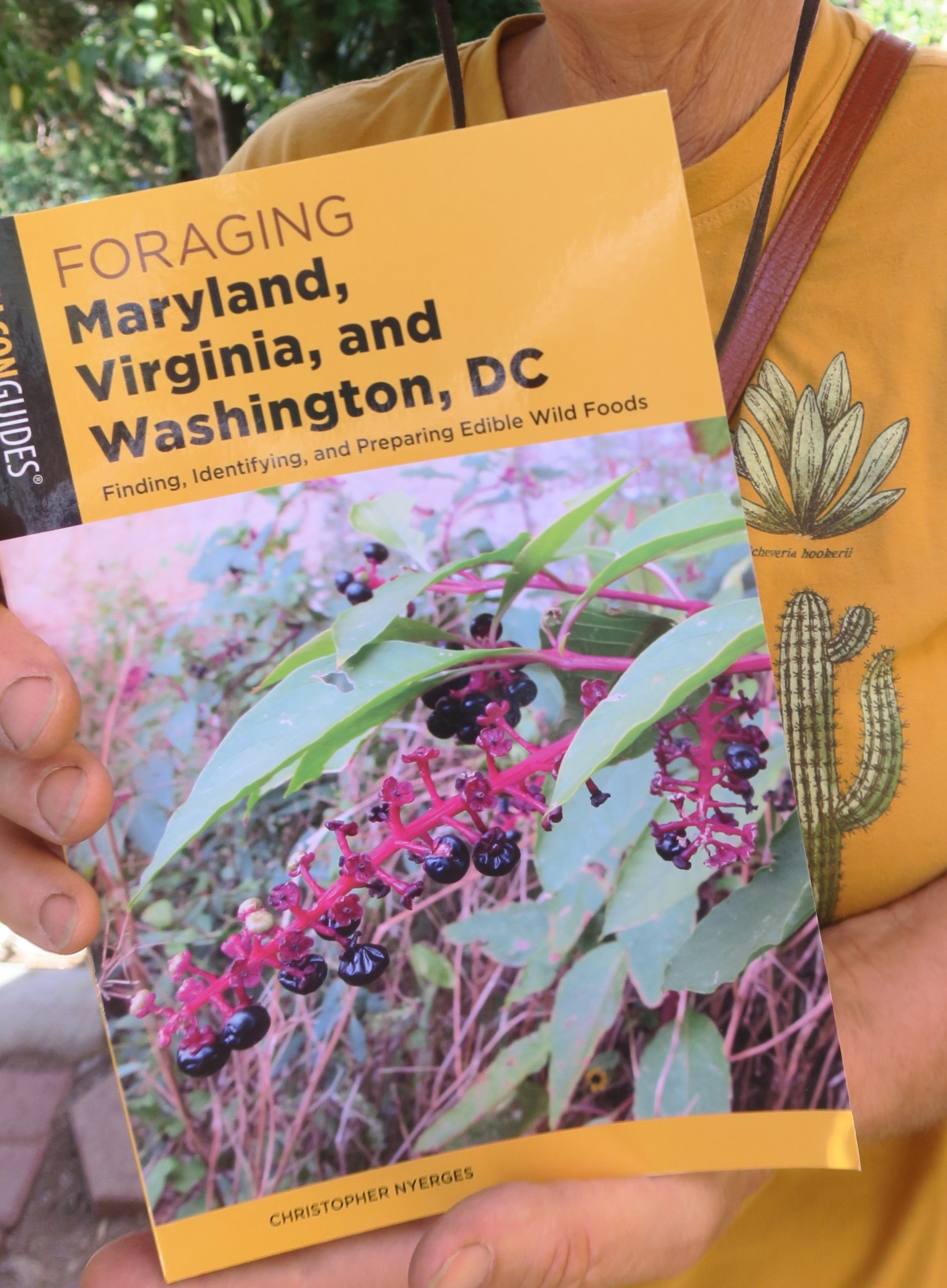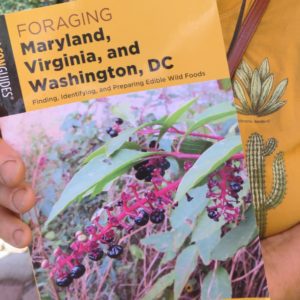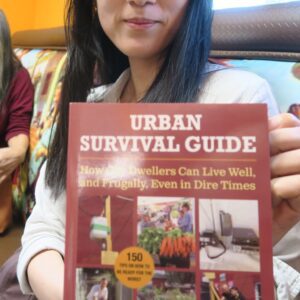Description
FORAGING MARYLAND, VIRGINIA, AND WASHINGTON D.C., a Falcon Guide, 22.95
Released September 1, 2022, this latest book by Christopher Nyerges covers generally the Eastern seaboard, and specifically the areas radiating from the U.S. Capitol area.

The book covers 65+ plants, and many of the Families that are entirely safe for food.
The book is fully illustrated with color photos by Nyerges, Rick Adams, Malcolm McNeil, and others. Malcolm McNeil of Virginia assisted with this project, and wrote the forward.

244 pages, with descriptions of how to use each plant.
If you’ve ever lived in this area, or visited, you will recognize many of these uniquely “Eastern” plants such as pokeweed, milkweed, sassafras, witch hazel, goldenrod, and coltfoot.
Nyerges points out how Tony Joe White created much confusion about eating Poke with his 1968 song, “Polk Salad Annie,” about a woman who eats Poke. “Salad” suggests you can eat Poke raw, but you can’t! You must boil the greens a few times to make them edible. White should have called his song “Poke Sallet Annie,” since “Sallet” refers to cooked greens. Poke greens have been enjoyed in rural communities for generations!

You’ll also learn about the tasty roots of sassafras, a tree or bush that is very common in the east, and, despite the presence of safrole (banned by the FDA because of its carcinogenic effects), sassafras tea and gumbo from the leaves has been used widely for centuries as best as we can tell. It’s very easy to recognize the sassafras plant, and this book will show you how.

Coltsfoot is also included, a plant Nyerges learned about when living on his grandfather’s farm in eastern Ohio. Though coltsfoot is a marginal food, it’s a useful medicinal plant, and a good nicotine-free smoke.

And you can’t miss the colorful staghorn sumac if you live anywhere in the East. Nyerges shares how he learned to make a great lemonade from this plant.

Backstory: WHY I WROTE MY BOOKS
FORAGING VIRGINIA, MARYLAND, AND WASHINGTON D.C.
Nyerges grew up in the northern edge of Los Angeles County, where his love of botany and mycology began even before he entered high school. His early botanical studies took place in the Angeles National Forest, and in the rivers, canyons, deserts, and beaches of Southern California. He also spent summers at his grandfather’s farm in rural Ohio, where he studied the Eastern plants. His botanical journeys have taken him throughout the U.S., as well as parts of Mexico.
This latest book’s origin began after visiting his brother in Virginia, where he and his wife Helen explored Shenandoah Forest, Virginia and Maryland, and especially the Mall in D.C. They were in the area for a wedding, and while there, got a call from Malcolm McNeil, a naturalist at the Huntley Meadows Park wildlife sanctuary in Fairfax County, Virginia. Christopher gave a nature walk and fire demonstration for Malcolm’s students, and found Malcolm to be an outgoing and competent naturalist.
Helen said, “Hey, why don’t you write another Foraging book about this area?” Christopher had lived in Ohio a few times and knew the eastern plants, and after a bit of discussion, the publishers agreed that this would be a good addition to their foraging series. Malcolm McNeil was enlisted to be a consultant, contributing photographer, and writer of the foreword for the book. It took another year before the book materialized.
“We were amazed that so many wild foods were hidden in plain view right there on the Mall,” says Nyerges. “We saw wild onions at the Vietnam Memorial, plantain on the south lawn of the White House, and dozens of traditional wild foods around the Smithsonian’s Museum of the American Indian.”
This book embodies Nyerges’ essential knowledge of the Eastern Plants for someone wanting to follow in the footsteps of the ancestors. It includes his nutritional charts, and his Self-Test about edible botanical families. This collection of useful plants tells the Easterner howto recognize such traditional foods and medicines as sassafras, witch hazel, poke weed (remember the song “Polk Salad Annie”?), staghorn sumac, goldenrod, wild onions, and many more.
Malcolm’s discussion includes commentary on how the native americans, and enslaved African peoples who lived in this area, embodied many of the survival skills that are now being remembered and brought back alive.
As Christopher notes in the book, the plants listed here can also be found in all the surrounding states.
280 pages
Fully illustrated




Reviews
There are no reviews yet.